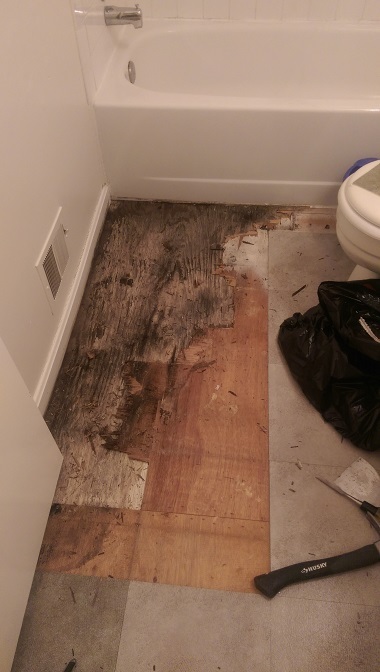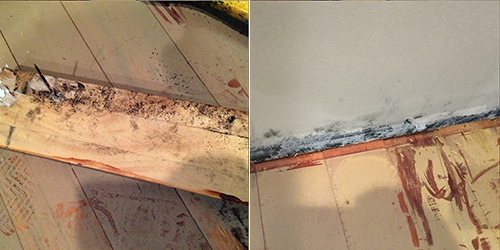How to avoid a Water Damaged Bathroom
How to avoid a Water Damaged Bathroom
Blog Article
We've noticed the article on How to Prevent Bathroom Water Damage down the page on the web and accepted it made sense to discuss it with you here.

The restroom is very at risk for wet buildup and potential water damage because of the regular use water in it. This post provides basic inspection techniques to assist finding water damages hazards.
The frequent use of water in the shower room makes it very at risk for moist accumulation as well as prospective water damages. By evaluating it routinely, you can minimize water relevant damages.
The following collection of examinations is very easy to perform and should be done once in every 3 months in order to keep your shower room healthy and to avoid possible water damages triggered by the bath tub, the shower, pipeline joints and plumbing, sinks, cupboards, and also the toilet
Do not overlook doing these examinations and also be thorough while doing them. Remember that these basic examinations can save you a lot of cash by supplying early signs for water damages
Sinks and also Cabinets
Sinks and cupboards are revealed to moisture and moisture day-to-day and are typically ignored. Check consistently under the sink and on the counter top over it. Fix any drip in the trap as it might recommend drainpipe problems. Take a look around the sink, sluggish draining pipelines may indicate an obstructed drain. Replace sink seals if they are broken or loosened.
Bath tub and also Shower
The shower and bathtub need special interest and also upkeep. Examine the floor tiles and also change if cracked. Make sure that there is no missing grout between the ceramic tiles. Check and also change fractured caulking at joints where the wall surfaces meet the flooring or the bath tub. Obstructed drains pipes and also pipelines troubles will certainly protect against the bath tub from drying out and may indicate severe issues underneath the tub. Talk to a specialist promptly to stop architectural damages. Focus on discolorations or soft areas around the tub walls as they might suggest an interior leak.
Plumbing
Signs for water damage are hard to detect since most pipelines are mounted inside the wall surfaces.
Pay unique focus to floor covering and walls dampness and also discolorations as they might suggest an unnoticeable plumbing problem. Check dampness degrees in adjoining rooms too.
The Commode
The bathroom is a susceptible water joint. Inspect the water lines and look for leaks around the toilet seat, in the hose pipe, and also under the water storage tank. If you spot any type of indicators of moisture on the flooring around the commode, check for leaks in the toilet edge as well as tank seals.
Realize that hanging bathroom bowl antiperspirants boosts the opportunities for obstructions.
Water Damage Signs In The Bathroom To Avoid Cleanup
Musty smell
This is one of the easiest signs to catch because musty smells are so odorous. The damp, earthy, moldy smell should be a big red flag. The smell will develop when moisture gets trapped in surfaces, and begins to facilitate mold growth. Leaking pipes under cabinets, inside walls, and behind shower fixtures will cause moisture to stay trapped and not dry, which will lead to mold growth and spread. As soon as you notice any musty smells in your bathroom, have it checked for hidden water damage and cleanup signs.
Visible mold
If the smell isn’t there to give it away, sometimes you will actually see mold growth. Finding mold in your bathroom is a serious problem, because mold is very harmful to your health. By the time mold growth is visible, it also means that water damage has already occurred and been present for some time. The only way the mold problem can be resolved is to find the source of the moisture and get it stopped. To safely and adequately remove mold, you need to have professionals handle the remediation. Do not waste any time in getting mold problems addressed, fixed, and sanitized so that you can protect you and your family from the many respiratory symptoms caused by mold exposure.
Damaged floors
Bathroom floors should be able to withstand some exposure to water while still remaining in good condition. However, when excess exposure or water leaks occur, they will begin to damage even the most water-resistant flooring. If you notice any cracking, bubbling, staining, or warping on your bathroom floors, there is probably a water leak somewhere causing the distortion. If you notice areas of the floor have become softer, or even have a spongy feeling, there is probably damage to the subfloor. Subflooring is typically made up of plywood. When plywood is exposed to water or moisture, it will absorb it. Once it has become saturated, the weight of the excess water will cause the wood to swell and soften. Check the floors in your bathroom frequently to catch any of these sings before they lead to damaged subflooring.
Changes on walls
When water leaks behind walls, it will cause changes in the drywall. Peeling plaster, blistering paint, and soggy wallpaper are all good indicators that excess water is building up behind the wall. Water leaking behind drywall will cause it to swell and be soft to the tough. If you start to notice gaps along the trim of your walls, or where tile meets the wall, it could also be a strong indicator that there is a leak behind the wall. Any changes, distortion, or damage on the walls should be evaluated as soon as you notice it to prevent further water damage and cleanup.

Hopefully you enjoyed our section about Common Causes of Water Damage in a Bathroom. Thanks a lot for finding the time to read through our piece. Enjoyed our blog? Please share it. Help others check it out. Bless you for your time. Please visit our website back soon.
Browse Website Report this page